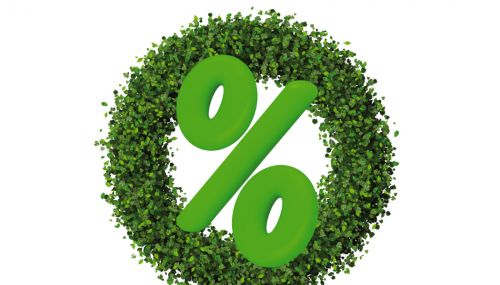All
Industry at a Crossroads

Call it a fork in the road, a crossroads, or a turning point. Whichever phrase is used, the meaning is the same for the heating fuel industry. Policymakers and energy leaders are moving forward with plans to drastically reduce greenhouse gas emissions. Fossil fuels are being phased out wherever possible. Even major petroleum producers, like BP and ExxonMobil, are calling for carbon taxes. For the heating oil industry to survive, it must now implement and follow an achievable pathway to a zero-carbon future.
The National Oilheat Research Alliance (NORA), a check-off program charged with researching and developing emissions-reducing heating fuel technology, is one of several trade associations most actively engaged in laying out that pathway. Its leadership — represented by Chairman Charlie Uglietto, President John Huber, Senior Research Adviser Richard Sweetser, and Senior Laboratory Scientist Dr. Tom Butcher — delivered the keynote address, “Future: Fuel: What the heating oil industry needs to do now to keep it viable in the future,” before a standing-room-only crowd at the 2019 Eastern Energy Expo on May 21.
“Eventually, we’ve got to get carbon out of our fuel.”
“Eventually, we’ve got to get carbon out of our fuel.”
NORA Chairman Charlie Uglietto, also owner of Cubby Oil, was first to take the podium. It was he who uttered the phrase that gave this article its title, after which he added, “The question is how are we going to approach it.” To provide some background on why NORA is pursuing biofuel blending as the best path forward, he relayed the story of his own company.
A third-generation family business, Cubby Oil was founded by Uglietto’s father in 1925, and today’s Uglietto’s son is also with the company. Located in the Boston area, the company’s customer base is approximately 80% residential and 20% commercial. The furnaces and boilers Cubby Oil technicians encounter in the field can be as much as 60 years old or brand new. A licensed burner technician himself, Uglietto continues to check in with his technicians to “keep a hand on the pulse” of his business, as well as Boston’s diverse heating equipment portfolio.
About 10 years ago, Uglietto said, he recognized that despite all of the hard work his company was doing to take care of customers, its product continued to be tarnished by natural gas utilities and policymakers alike. It was then that he decided to make the jump to B5 Bioheat® fuel. Three years ago, Cubby Oil upped its blend to B20, using cold-flow additives to address any serious issues a cold New England winter might present. There were none. One year ago, Cubby Oil moved up to B30. “Again, there were no issues whatsoever,” Uglietto said. “I’ve heard concerns [from others in the industry] about pumps failing; I can assure you, it works.”
Uglietto noted that increasing biofuel blends does require due diligence on behalf of the blender and retailer. To that end, Cubby Oil has been running an additive program since 1989 and has continued to make adjustments there as the company increased its product’s biofuel content.
Speaking to a crowd of fuel delivery business owners, service managers, and their industry associates, Uglietto encouraged those in attendance to reach out to their state association leaders and show support for higher biofuel blends. “I certainly want to be able to pass my business down,” Uglietto said, “but I am concerned that by 2030 I won’t have a business to sell or pass down. I firmly believe that we need to organize around where we want to go and put in a plan to move to higher bio blends.” Uglietto acknowledged that such plans are already in the works in New York, but stressed the need for industry-wide adoption.
“If you take one thing away from this presentation, we all need to mobilize and express our support for where leadership here would like to see us go,” Uglietto concluded. “I’d like to see us in business through 2050, never mind 2030.”
Truth vs. Reality vs. The Future
NORA Senior Research Adviser Richard Sweetser was next to speak. As the official “numbers man” for the organization, Sweetser is an expert at examining the science behind emissions-related studies and policy proposals and interpreting them for energy industry stakeholders. In doing so, he often has to distinguish scientific facts, or truth, from the realities of the today’s energy marketplace and policy arena in order to outline what’s possible in the future and what isn’t.
The truth, Sweetser explained, is that current studies indicate renewable energy sources are only intermittently available and require backup fossil-fuel-based energy sources. Furthermore, expanded deployment of solar photovoltaic and wind technology would require enormous land investments, and there are additional concerns surrounding the heating and power capacity of these renewable energy sources.
Also true, however: building and vehicle electrification, powered by renewable energy sources (also known as beneficial electrification), is widely seen as the future of electricity. Its supporters include the Rocky Mountain Institute, the Natural Resources Defense Council, the Sierra Club and countless private investors and policymakers.
As such, policies are moving forward in states across the Northeast to reduce carbon emissions and “electrify everything.” As a result, Sweetser explained, heating oil proponents can no longer hold up B2 or B10 as an environmentally friendly alternative. “That was the truth against natural gas, but now we’re dealing with electric heat pumps,” he said. Hence, the formula for greenhouse gas equivalencies must be recalibrated, with higher biofuel blends needed to show the industry’s commitment to emissions reductions.
In terms of market realities, Sweetser pointed out that states across the Northeast are incentivizing electrification through publicly owned utilities. At the consumer level, this has materialized mainly as rebates for electric heat pump installations.
Also real: prices for wind energy have decreased at the wholesale level such that this energy source can now offer renewable electricity competitively priced with fossil-fuel-based power generation on a capacity basis. “That explains why you’re seeing excitement about wind turbines in New England,” Sweetser said. Additional investments are being made in solar power and battery storage to improve these technologies as well.
However, as Sweetser explained, the reality of the situation is that a renewable grid powered by solar, wind, and battery technology, would run into numerous challenges in terms of resilience and cost. “Nothing works if it’s too expensive,” he said. “Economics are fundamental to everything.”
Where, then, do truth, reality and the future meet? True, hydrocarbon dominates today’s energy economy. Yet the threat of electrification is real and growing as state governments look to the European Union rather than Washington, D.C., for guidance on emissions-reduction goals. For a viable future, Sweetser said that boilers must run on B23.2 biofuel-blended heating oil to match the marginal emissions of electric heat pumps. And if the electric grid becomes 60% more renewable, the blend level required for emissions parity increases to B69.3. “B50 by 2030 is imperative,” Sweetser concluded.
Another Path Forward?
Some entrepreneurs might wonder, if beneficial electrification is the future, why not transition to “hybrid” heating systems combining oil and electric technologies. Indeed, the National Oilheat Research Alliance has explored that option as well.
At the presentation, Dr. Tom Butcher discussed NORA’s findings from a study conducted with the New York State Energy Research & Development Authority (NYSERDA) on residential heat pump hydronic hybrids – i.e., homes that have mini-split heat pumps and oil-fired boilers already installed. The study found that most consumers who have mini-split heat pumps only use them in small spaces such as basement dens, and most don’t even realize the units offer heating in the first place. Instead, they think of them only as air conditioners.
There were some scenarios in which homes were able to shut off their oil-fired boiler and switch to the mini-splits for heating during periods of low demand, but the few that did this did not do so in ways that made much sense in terms of comfort, efficiency or cost. Some homeowners would still run their heat pumps on very cold days and wouldn’t know why.
According to Dr. Butcher, the study generally found that “heat pumps are having trouble meeting load requirements on the coldest days of the year, and many folks are unhappy with the performance they’re getting from heat pump applications.” Still, state governments are pressing forward with electrification initiatives. Dr. Butcher brought the room’s attention to the phrase, “missing money,” which policymakers use in reference to the size of the financial incentive utilities need to provide in order to make it worthwhile for homeowners to get off of oil.
“Just the fact that they’re talking about this makes it clear that heat pumps aren’t economic by themselves,” Dr. Butcher said, “but also indicates they are ready to invest state funds to make it happen…”
“Can we survive the threat of electricity?”
NORA President John Huber began his wrap-up of the presentation reflecting on the industry’s success in proving itself versus natural gas. And while it’s too early to call that fight completely won, “In this region, everyone is done with it,” Huber said. “More natural gas pipelines only mean more fossil fuels and more global warming.” The question now, he said, is can the heating oil industry survive the threat of electricity, and if so, how. Fortunately, we already know the answers.
Huber drew an analogy to explain his reasoning here: “Thinking back to college, it’s a do-or-die test,” he said. “You study some part of the course and fortunately for you, the question on the test is the one that you studied for.” Industry stakeholders already know which emissions targets policymakers are looking to hit, and have studied up on how to achieve them.
“We have been working to develop renewable biofuels and high-efficiency oil-fired heat pumps,” Huber said. Blending heating oil with biodiesel and eventually renewable diesel or ethyl levulinate offers an existing pathway to a zero-carbon fuel. Furthermore, NORA is “working on a biodiesel-fired heat pump that can get us to 100% energy efficiency,” Huber said.
“As an industry we have to understand that we provide solutions and need to communicate it to people so that they understand,” Huber concluded. “Electricity is not a panacea. Electricity may be next year’s solution, but we can be today’s and have no reason not to be.” To be that solution, Uglietto added, the industry must embrace B20 by 2025, B50 by 2030, and eventually B100.
Related Posts
 How to Set Your Business Apart with Renewable Propane
How to Set Your Business Apart with Renewable Propane
Posted on October 16, 2025
 EIA Report: Biodiesel and Renewable Diesel Imports Fall Sharply
EIA Report: Biodiesel and Renewable Diesel Imports Fall Sharply
Posted on October 16, 2025
 Northeast Liquid Fuel Providers Put Higher Bioblends in Focus
Northeast Liquid Fuel Providers Put Higher Bioblends in Focus
Posted on August 19, 2025
 Lower Carbon Lineup Puts Businesses on the Path to Net Zero Goals
Lower Carbon Lineup Puts Businesses on the Path to Net Zero Goals
Posted on August 18, 2025
Enter your email to receive important news and article updates.
